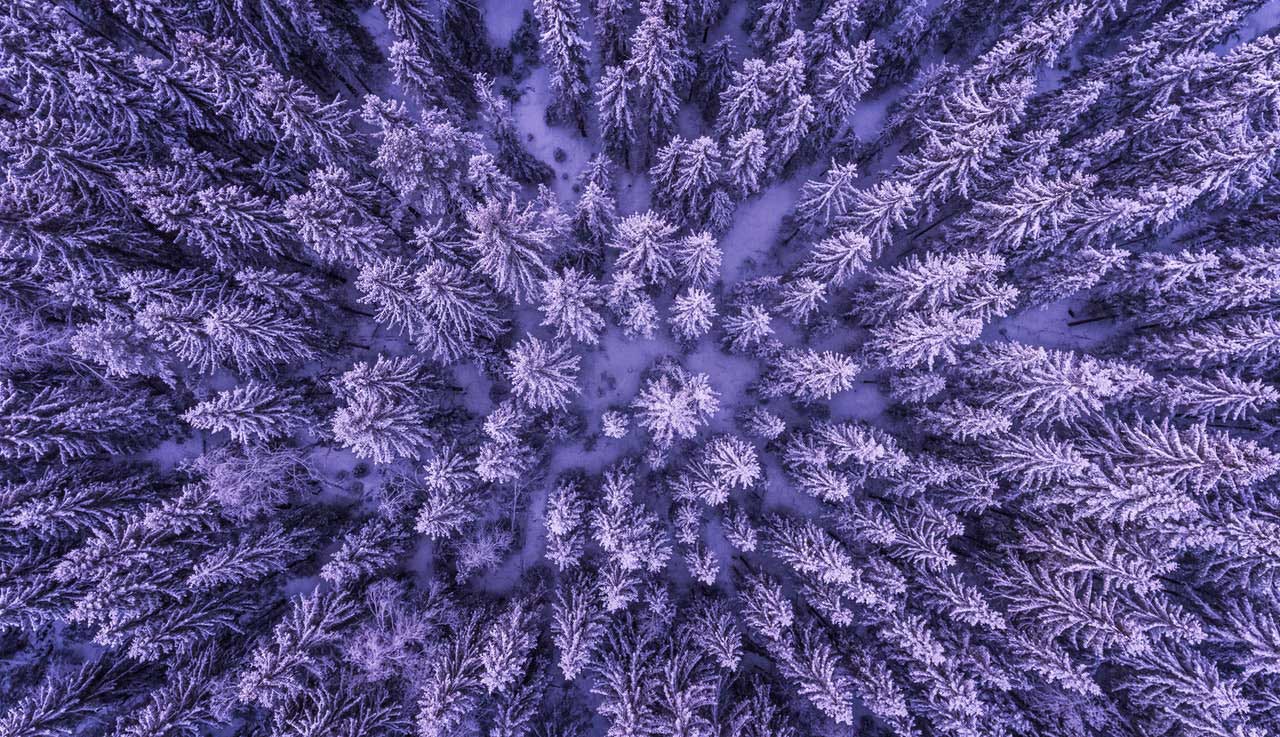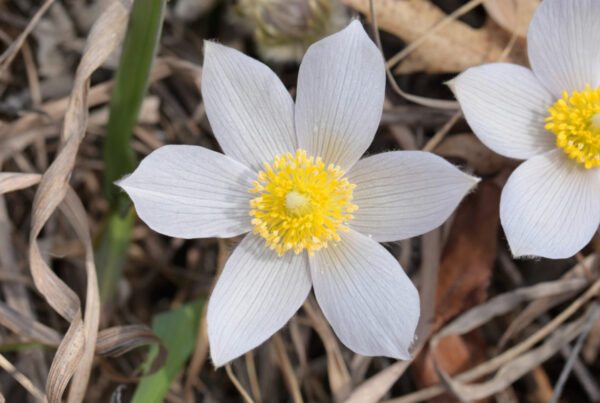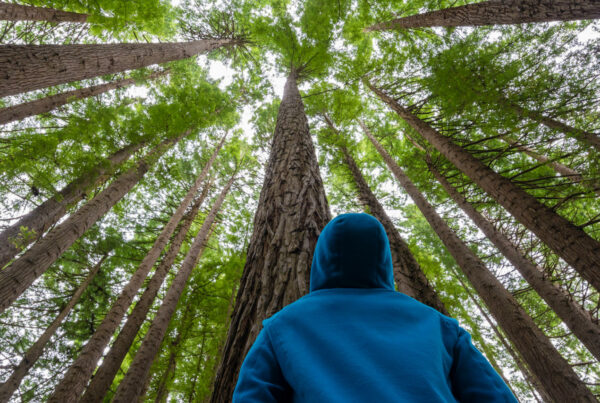“Study the science of art. Study the art of science. Develop your senses – especially learn how to see. Realize that everything connects to everything else.”
― Leonardo da Vinci
Ever since I was a kid, I’ve been fascinated by the patterns and shapes that nature repeats all around us. The structure of so much organic life follows self-similar, branching patterns that are repeated at different sizes.
These patterns are known as fractals and they can be observed all around us in the form of flowers, plants, trees, clouds, mountains, rivers, waves and coastlines.
These fractal patterns are also repeated inside us in the structure of our brain, lungs, heart, skin, blood vessels, spinal column and nervous system.
The term fractal was coined by the mathematician Benoit Mandelbrot in 1975. In his seminal work The Fractal Geometry of Nature, he defines a fractal as “a rough or fragmented geometric shape that can be split into parts, each of which is (at least approximately) a reduced-size copy of the whole.”
Mandelbrot is best known for his discovery in mathematics of the Mandelbrot Set, which can be programmed into basic lines of code to create an infinite stream of changing, self-similar fractal patterns.
Here is an excellent example of a Mandelbrot Set:
The Mental Health Benefits of Fractals
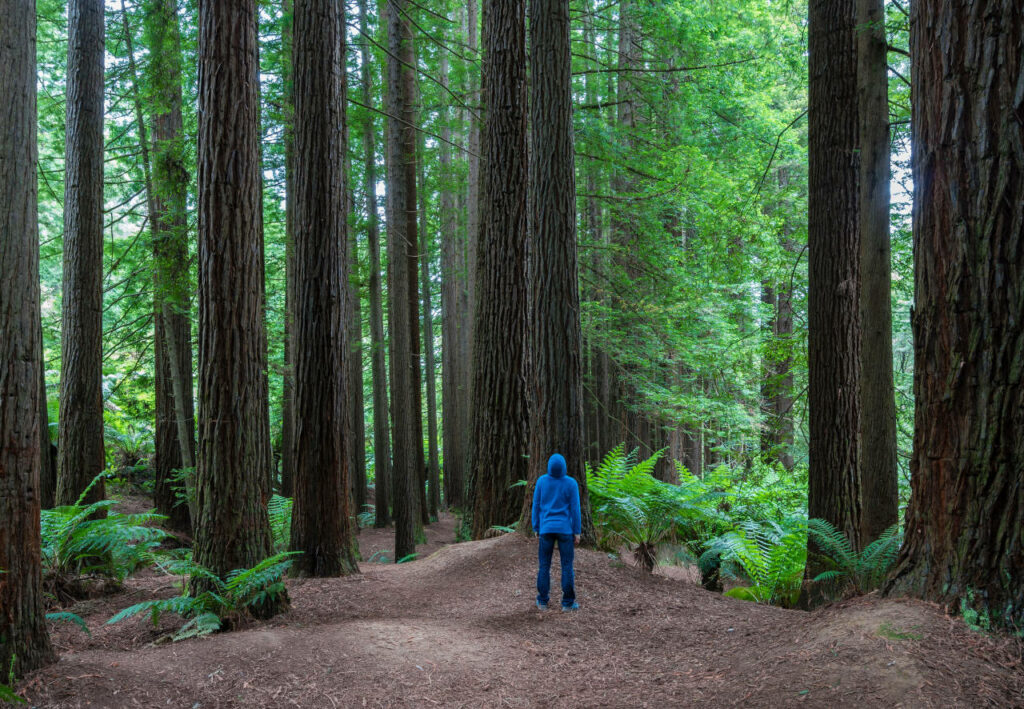
One of the reasons why spending time outdoors is so therapeutic is because the natural world is filled with fractal patterns that relax us.
A research study by Richard Taylor at the University of Oregon found that people are hard-wired to respond to a specific form of fractal found in nature, which can reduce stress levels by up to 60%.
He found that the stress-reduction is triggered by a physiological resonance that occurs when the fractal structure of the visual system matches that of the fractal image being viewed.
Another research study led by Swedish researcher Caroline Hagerhall used electroencephalogram (EEG) devices to measure brain waves while viewing fractal images.
She found that the brain’s frontal lobes produce the feel-good alpha brain waves characteristic of a relaxed, awake state even when exposed to photos of fractals in nature.
So, if you’re feeling fatigued or stressed, the best therapy might simply be taking a 20-minute walk outside in nature, which has been found to significantly reduce stress hormones like cortisol.
The mind is attracted to symmetry and our consciousness works like a pattern recognition system constantly scanning our environment. Fractals make it easier for our brains to stop analyzing and enjoy these consistent patterns.
Where To Observe Fractals In Nature:
Here are some fun and playful fractal gazing activities you can do both inside on your computer screen and outdoors in the natural world to improve your fractal pattern recognition skills.
1. Forests
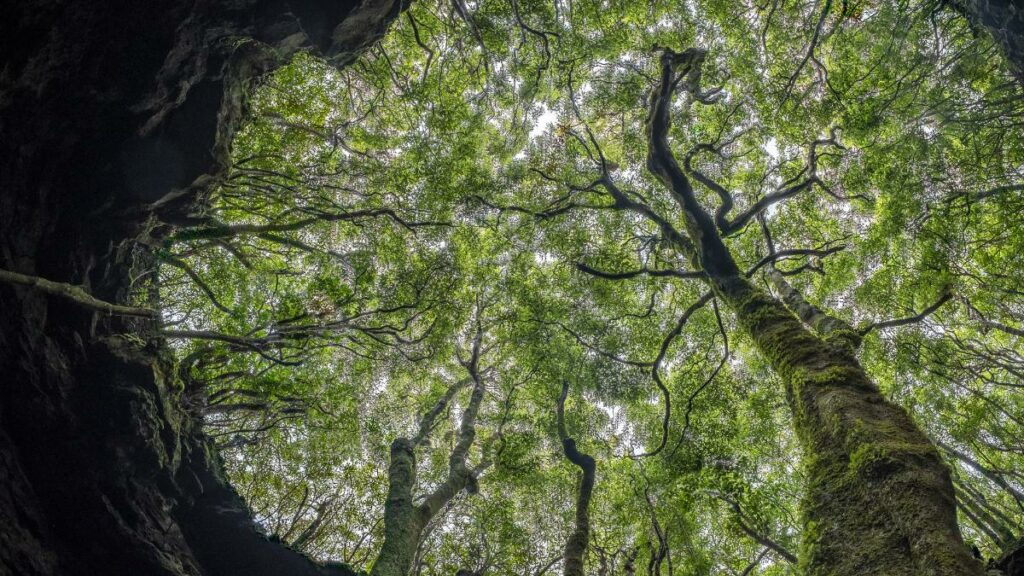
Trees are perfect examples of fractals in nature. You will find fractals at every level of the forest ecosystem from seeds and pinecones to branches and leaves, and the self-similar replication of trees, ferns, and plants throughout the ecosystem.
Each tree branch, from the trunk to the tips, is a copy of the one that came before it. This is a basic principle that we see over and over again in the fractal structure of organic life forms throughout the natural world.
Fractal gazing activity: Take a walk in the forest and just mindfully observe the branching fractal patterns all around you in plants and trees.
2. River Deltas
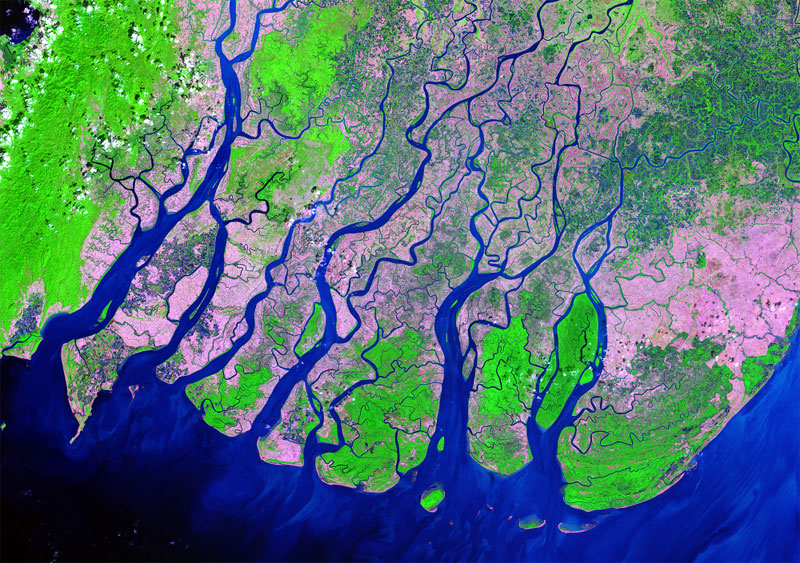
This aerial footage from NASA of the Ayeyarwady River Delta (also referred to as Irrawaddy) in Myanmar is a great example of the fractal branching patterns of river delta ecosystems.
Fractal gazing activity: Visit the NASA Earth Observatory and see how many different fractals you can identify in 10 minutes browsing the website.
3. Mountains
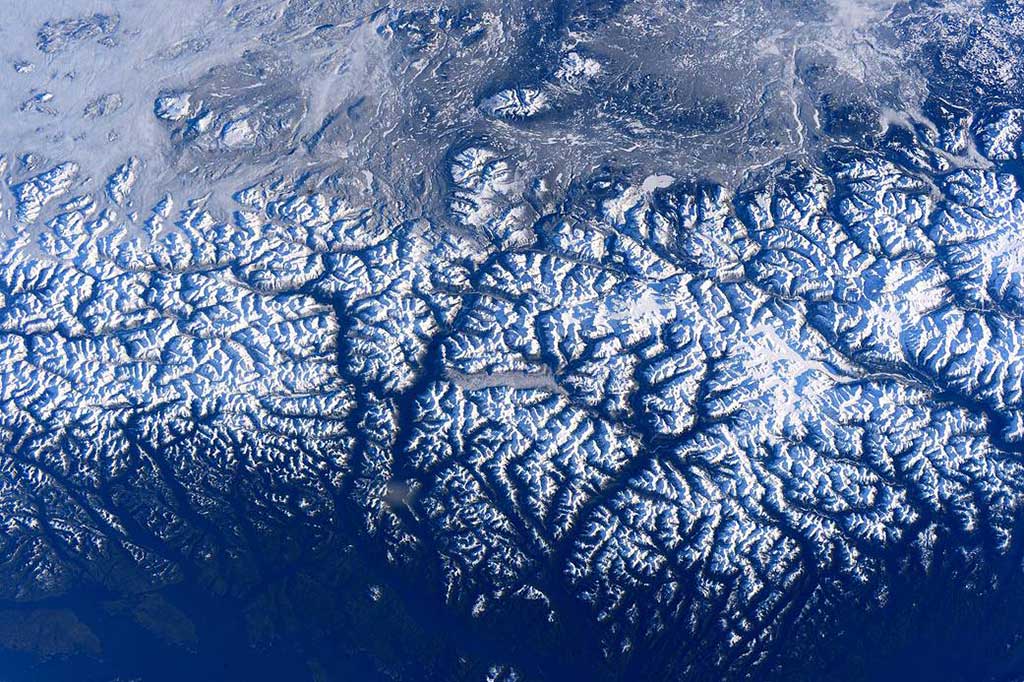
Mountain ranges are great examples of fractal patterns. They are best viewed from aerial satellite imagery like the mountains of British Columbia from the NASA picture above where you can see the full fractal pattern of how mountains spread out across the landscape.
Fractal gazing activity: Visit Paul Bourke’s Google Earth Fractals and explore aerial photos of fractal mountain ranges, rivers, and coastlines.
4. Plants
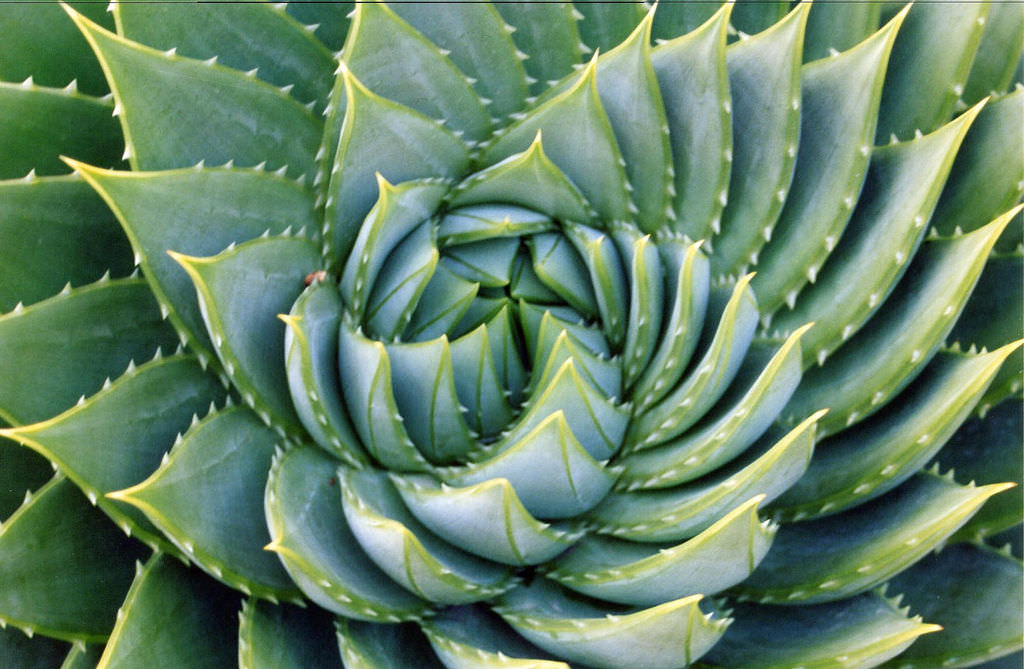
You will also find fractal patterns in growth spirals throughout the plant world, which follow a Fibonacci Sequence (also referred to as the Golden Spiral) and can be seen as a special case of self-similarity.
The fractal plant growth spiral is a fractal structure seen in the plant kingdom because it’s the most efficient way for organic life to grow and for energy to flow through the plant.
Fractal gazing activity: Visit a local botanical garden and see how many fractal patterns you can discover wandering the gardens.
5. Flowers
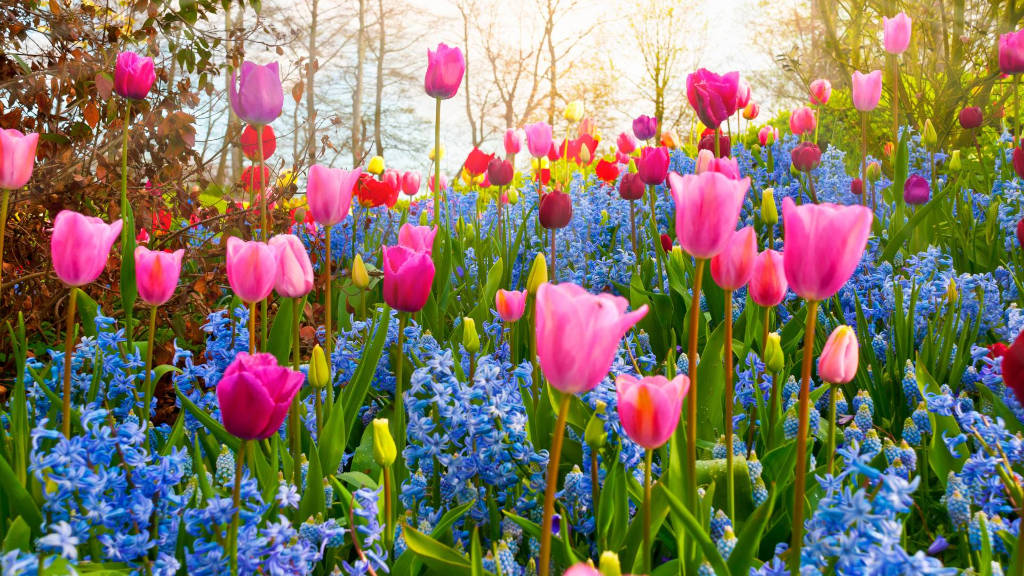
You can also observe excellent fractals in the self-replicating patterns of how flowers bloom. Gardens are amazing places to explore the fractal nature of growth.
Fractal gazing activity: Go for a mindful walk in a grassy meadow or local park and observe how many fractal patterns you can count in the flowers around you.
6. Romanesco Broccoli
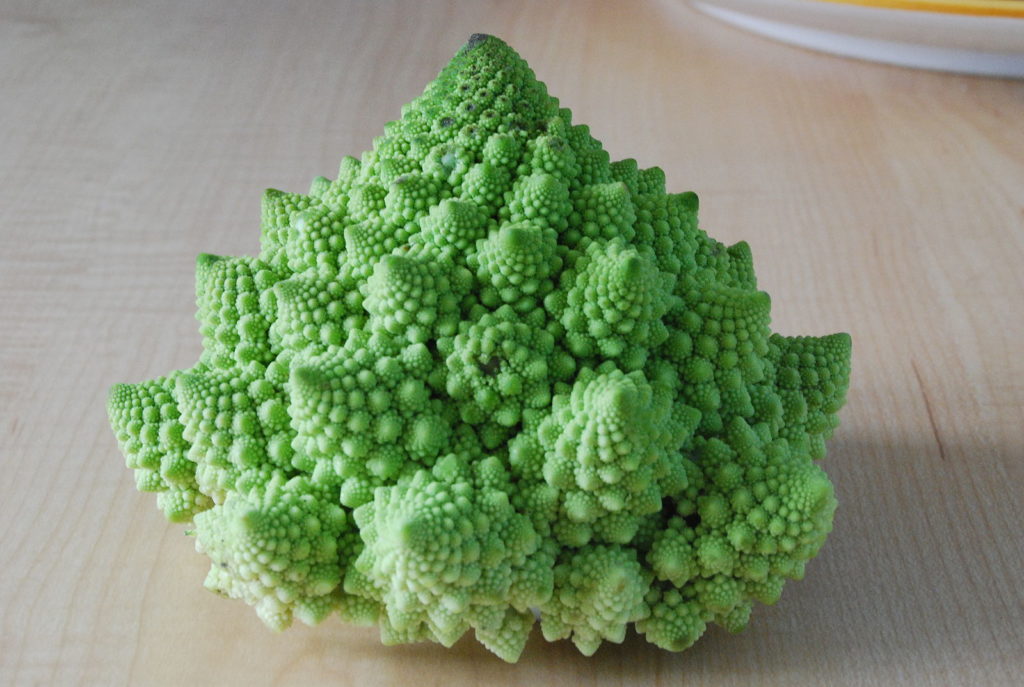
This is my favorite example of a fractal pattern. This edible flower bud of the species Brassica oleracea (broccoli) also known as Romanesco broccoli comes from Italy and it is a wholesome and delicious example of fractal geometry.
Fractal gazing activity: See if you can find a local vegetable market or farm that grows Romanesco broccoli, it’s quite a sight to see in person (and tasty too!).
7. The Human Body

The human body is made up of fractal systems such as our lungs, circulatory system, nervous system, and brain neurons. Given that self-similar fractal branching patterns are nature’s invention to minimize friction and maximize growth, it’s no wonder we are made up of fractals.
Fractal gazing activity: Explore the fractal branching systems of your body with free online anatomy tools like Inner Body and Zygote.
8. Snowflakes
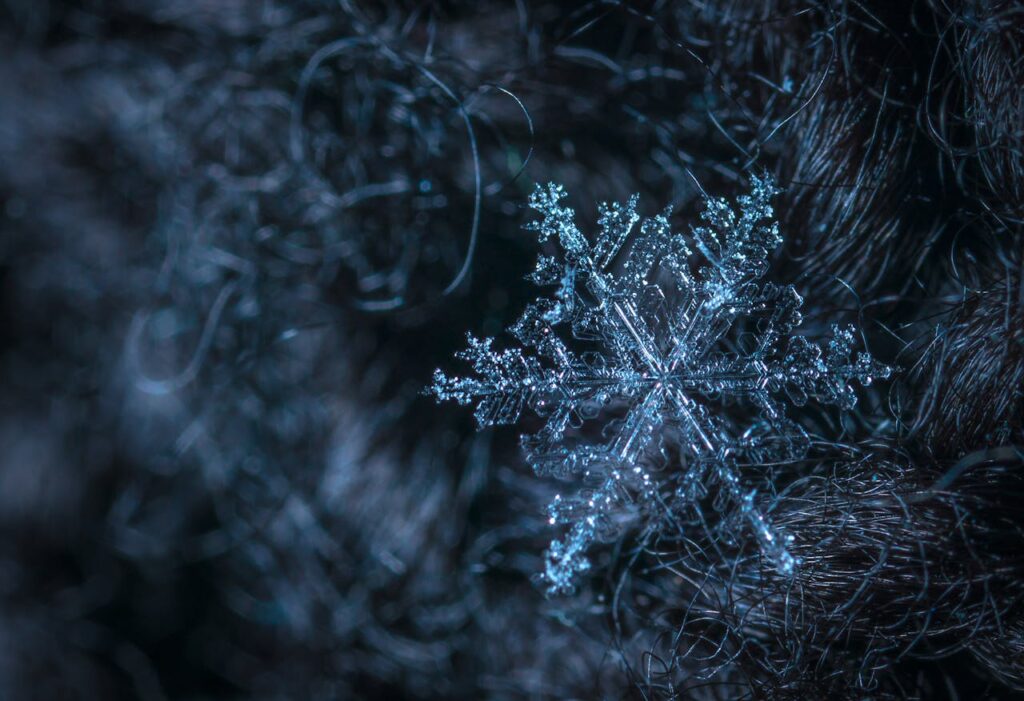
Did you know that when viewed under a microscope no two snowflakes are completely alike? The most famous fractal snowflake pattern is known as the Koch snowflake, which was one of the first fractals ever described in the scientific record.
Fractal gazing activity: Understand the unique mathematical properties of the Koch Snowflake algorithm and craft your own Koch snowflake to decorate your house with this fun fractal snowflake activity.
9. Water
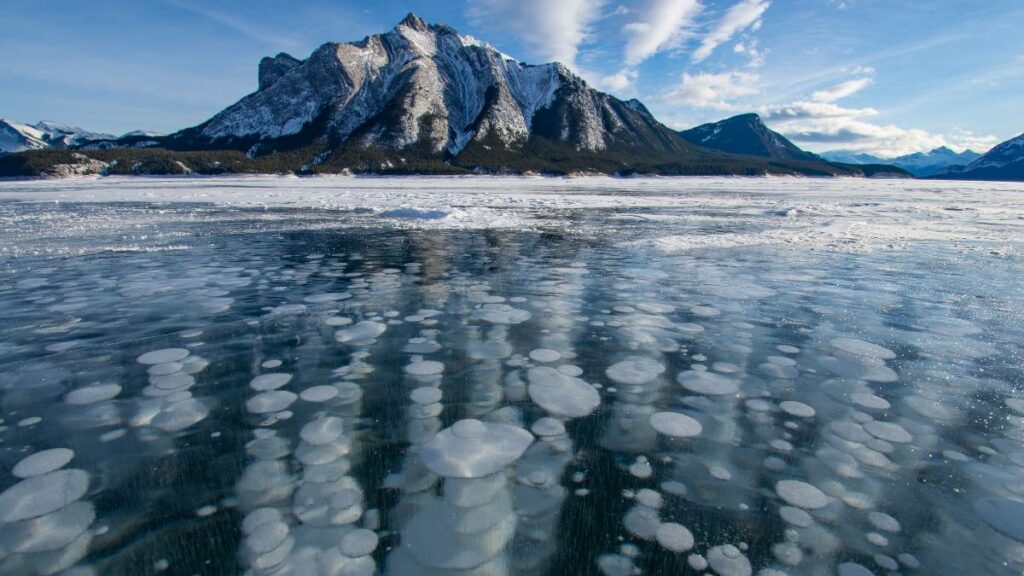
The fractal bubbles in the ice of Abraham Lake on the edge of Banff National Park are formed by decaying plants and trees on the bottom, which releases methane gas that creates bubbles in the water that freeze.
You will find fractal patterns in every body of water in the form of bubbles, waves, swirls, currents and foam. Water tends to take the path of least resistance and the flowing patterns of water take on a fractal structure.
Fractal gazing activity: Next time you pour yourself a coffee, notice the bubbles that are formed in the hot liquid and be mindful of the swirling patterns when you add cream or milk to your beverage.
10. Shells

Another great way to observe fractals is on shells on the beach or snails on the ground. Nautilus shells are a brilliant example of Mother Nature showing off her fractal geometry skills.
If you look closer you’ll notice the whole shell of the Nautilus has the same pattern as the small parts of the shell.
Fractal gazing activity: After it rains, take a walk and enjoy that fresh smell in the air and look to find snails and observe the unique fractal pattern on their shells.
Is The Structure Of The Universe Fractal?
Fractals can help you understand the universe. This fascinating video explores how fractals are used to create realistic-looking virtual landscapes in video games and virtual reality environments.
Fractal arrangements have explanations at different levels – mathematics, physics, chemistry, biology. Here’s what Wikipedia has to say about what the sciences have observed about these patterns in nature:
“From the point of view of physics, spirals are lowest-energy configurations which emerge spontaneously through self-organizing processes in dynamic systems. From the point of view of chemistry, a spiral can be generated by a reaction-diffusion process, involving both activation and inhibition. Phyllotaxis is controlled by proteins that manipulate the concentration of the plant hormone auxin, which activates meristem growth, alongside other mechanisms to control the relative angle of buds around the stem. From a biological perspective, arranging leaves as far apart as possible in any given space is favored by natural selection as it maximizes access to resources, especially sunlight for photosynthesis.”
Fractals are hyper-efficient in their construction and this allows plants to maximize their exposure to sunlight and also efficiently transport nutrients throughout their cellular structure. These fractal patterns of growth have a mathematical as well as physical beauty.
Fractals, Ecology, and Biomimicry:
So, why are fractals important to ecological awareness? In the ecology book Finding Our Way Home author Myke Johnson notes that our ability to measure fractal patterns in the natural world has also given us:
“The ability to create digital worlds that remind us of our own. Fractal formulas are used to generate computer graphics that look realistically like mountain ranges, and rivers, and forests, and clouds.
Fractals have been used to design antennas in greatly reduced sizes, which enabled the creation of the next generation of cell phones and other electronic communicators. Fractal geometry is enlarging our ability to create new devices that work better because they follow patterns that resonate with the natural patterns around us.”
Isn’t that amazing? Biomimicry in action.
Fractals also inspire awe and wonder, especially when you bring your full attention to exploring and mindfully studying them in natural environments like forests. To expand your understanding of fractals, I highly recommend watching the documentary Fractals: Hunting The Hidden Dimension.
Watching it will help you further develop your pattern recognition skills so you can recognize and understand the fractal patterns all around you.
If you want to experiment with creating your own fractal patterns, try playing around with Frax (iOS only) or Xaos, a free tool from the Fractal Foundation for those who want to get creative with fractals.
- Reconnect To Your Original Nature Through Awe And Wonder - April 17, 2024
- Pasqueflower: A Spring Wildflower That Symbolizes Rebirth - April 5, 2024
- Deep Embodiment And The Flow of Embodied Awareness - April 1, 2024
